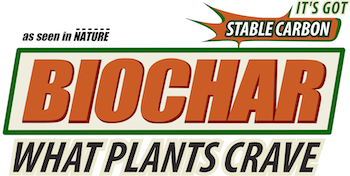Your cart is currently empty!
DIY Soil Fertility – Part 5: Fermented Plant Juice
on
Welcome to DIY Soil Fertility For Homesteads!
This post series covers the many ways you can build fertility, create soil, cycle nutrients and take responsibility for “waste” streams on your property – all with materials and substrates you are likely buying already or can be sourced for free or very low cast. These systems all integrate with one another to enable you to in-source your soil fertility inputs instead of relying upon centralized commodity supply chains. By employing these systems together in an integrated system you will improve nutrition (for soil and humans) and save dollars, while making living soil fertility enhancers better than anything you can buy at the store. The posts are written from our own experience and are geared towards the DIYer, though options are provided for ready-to-go purchased systems as well. Check the link tree below or at the bottom of the post to explore the rest of the series!
- Part 1: Vermicomposting
- Part 2: Bokashi Compost Systems
- Part 3: Compost Tea
- Part 4: Thermophilic Composting
- Part 5: Fermented Plant Juice
- Part 6: Charcoal and Biochar
- Part 7: Johnson-Su Bioreactor Compost
What Is Fermented Plant Juice?
Fermented Plant Juice (FPJ) is a fermented extract of the saps and chlorophylls of specific types of plants. It is enzymatically rich and full of lactic acid producing bacteria and yeast that can help to invigorate plant and animal growth (a probiotic).
FPJ is simple to make with typical home kitchen equipment and ingredients. The plants to be used in making the FPJ should be foraged locally (ideally on-site, or as nearby as possible to maximize the effectiveness of the indigenous microorganisms in your context).
Fermented plant juices are used the world over to boost soil and crop health. The methods and recommendations laid out in this blog post come from the Natural Farming Method, pioneered by Dr. Cho – Han Kyu of South Korea during the early 1960’s. His natural farming methods have since spread across the globe, as they are replicable in any location and can be prepared using what is available locally (what he calls indigenous inputs) instead of proprietary ingredients only found or made in one corner of the globe.
Background on the Natural Farming Method
Dr. Cho’s Natural Farming Method is based on Nutrient Cycle Theory, which is based on understanding plant physiology and the changing needs of plant as they pass through different stages of growth (just as humans do). Nutrient Cycle Theory (NCT) guides the farmer or gardener on what to apply, when to apply it and how much in order that developing plants get what they need, when they need it in sufficient but not excessive quantities (excess nutrients are environmental pollutants and can lead to disease).
For example, during vegetative growth (equivalent to teenage years in humans), plants will consume carbohydrates (Carbon) derived from photosynthesis and convert this to nitrogen-rich bodies as they reach their mature size. At the onset of flowering (sexual maturity) plants require more phosphorous, or as Dr. Cho would say, plants crave more “sour foods” (phosphorous rich ferments) during this time. During the reproductive stage (like pregnancy in humans), plants require additional potassium in order to develop proper fruit color. By creating various fermented plant juice mixtures, along with harvesting, cultivating and applying Indigenous Micro-Organisms (IMOs), we can feed the soil that will feed the plant exactly what it needs when it needs it to fully express it’s innate intelligence.
| What Is NOT Natural Farming | What Is Natural Farming | Benefits Of Natural Farming |
| Use of imported or artificial (lab-raised) microorganisms. | Uses “indigenous” microorganisms of IMOs. | Safe, cheap, easy to make and very effective. Strengthens the crops without being affected by all kinds of weather. |
| Use of chemical fertilizers. | Use of Nutritive Cycle Theory. | Nurtures and strengthens the crop in a natural way. |
| Mechanical tillage (conventional farming with deep ploughing. | No-till / Biological tillage via bacteria, fungi, protozoa, nematodes, earthworms, crustaceans and other soil macrofauna. | Soil clusters that are lumped into aggregates are fostered, which improves aeration (soil breathability(, drainage and moisture retention, creating ever-improving habitat for soil micro- and macro-organisms. |
| Annual arduous tillage, energy intensive, high labor and cost. | Grass mulching as remedy for weeds (using brown rice vinegar). | Holds moisture, provides habitat for microbial community, and keeps soil covered preventing erosion. Use of natural inputs helps to dwarf weeds. |
| Expensive state-of-the-art technology needed treatment facilities in livestock management. | The use of microbes (IMOs) for simple, cost effective livestock health management. | All wastes are recycled on-site and made use of, reducing costs. Livestock housing is at once a waste treatment facility, fertilizer producer and feed mixer. |
| Planting monocultures at high density. | Polycultures with plant layering and healthy spacing. | Higher yields due to emphasis on the formless nutrients of sunlight and air. |
| Use of pesticides to kill pests. | Use of natural inputs to “distract” the pests from fruit crops (Fermented Plant/Fruit Juice). | Pest attractants are placed away from the fruits to divert the pests. It is cheaper and focuses on co-existence and co-relation with pests. |
What Types Of Plants Go Into FPJ?
To make a potent fermented plant juice that will invigorate your crop plants, look for plants that exhibit the following characteristics:
- Early spring growth. These plants are able to shrug off colder temperatures at the beginning of the growing season. They can endure extreme climatic swings (from freezing or near to it to quite hot during the day).
- Fast and vigorous growth. These plants tend to have higher concentrations of growth hormones. FPJ made from these plants can can be applied to help remedy lack of vigor in target crop plants as well as to prevent or resist certain disease pressures.
NOTE: FPJ can also be made from thinned out fruits. These young, immature fruits contain high amounts of giberellins, which when used a feedstock for making FPJ can help to enhance foliage thickness and create more robust fruit. FPJs made from the actual target crop plants themselves help to further the growth of that crop – for example, pruned lateral buds or branches of tomatoes used as an FPJ input will help tomatoes flourish. Similarly for cucurbits (squash, melons, cucumbers etc) and sweet potatoes according to Dr. Cho.
When To Collect Plants For FPJ
- Avoid collecting plants immediately after heavy rainfall. The heavy rain will wash away beneficial microbes (lactic acid producing bacteria) and yeasts on the leaves (you want these to go into your FPJ). Give at least two days, ideally three, to let microbe communities repopulate leaf surfaces following rainfall.
- Avoid collecting during intense sun. Intense sun can evaporate nutrients from the leaves or other plant tissues that you want in your FPJ. If hot weather persists and making FPJ needs to continue, water the plant the day prior to picking.
- Avoid picking roadside plants, as these will have higher concentrations of pollutants present on leaf surfaces, which can inhibit fermentation.
- The ideal time to collect plants is just before sunrise, when plant moisture levels are high.
Materials Needed To Make FPJ
- Freshly collected plant material (gather according to the characteristics listed above and see our list below for some examples we us in making our own FPJs).
- Jaggery (raw cane sugar) or brown sugar (molasses is not recommended due to its higher moisture content, which will fail to raise osmotic pressures as high as jaggery or brown sugar, and thereby inhibit a good fermentation process).
- Clay or glass jar (glass jars should be tinted brown ideally).
- Paper towel or other porous paper for covering fermentation vessel (do not use newspaper).
- Rubber band or string for securing paper covering over fermentation vessel.
How To Make Fermented Plant Juice
- Gather your plants early in the day, ideally just before sunrise.
- Shake dirt off plants but do not wash (washing will remove the beneficial microbes you want in your FPJ).
- Cut your plant material into ~ 1.5 – 4 inch pieces to maximize surface area. Use only one type of plant per container (do not mix different plants – different FPJ’s can be mixed prior to application following the fermentation process).
- Weigh your plant material. Add approximately half of this weight in brown sugar or jaggery to your plant material, holding a little bit back as you go (you can always add more, but can’t take it out). Add or subtract sugar based on the moisture content of your plant material (the sugar will help to control the moisture content of the mixture as it ferments).
- Mix sugar and plant material with your hands until well incorporated in a large, wide bowl. Let sit for 1-2 hours covered.
- Transfer mix to your fermentation vessel of choice (clay or brown glass). The vessel should be 3/4 full and material can be packed down (a la making sauerkraut).
- Use a stone on top of a plate or something similar to compress the material slightly in the fermentation vessel.
- Cover the fermentation vessel with a paper towel and secure with rubber band or string.
- Place the jar in a cool and shaded place. Check at 1-2 days and remove the stone and plate weight to exchange the air then replace the stone and plate.
- Let the jar sit undisturbed for 5-7 days in cool and shaded place to complete fermentation.
Using Your Fermented Plant Juice
When To Use FPJ
Different FPJ mixes can be used at or during different growth stages of the target plants according to their needs and the characteristics of the plants used in creating the FPJ.
- Germination and early vegetative growth (“newborns” and “toddlers”). Use FPJs made from plants to grow fast and vigorous in early spring. This will help your crop plants gain quicker resistance to cold snaps and improve early vigor. Dr. Cho’s recommendations for FPJs to use in this instance include Artemisia vulgaris (Mugwort) and young bamboo shoots or lateral buds. Others that we have trialed and had success with include Symphytum officinale (Comfrey) and Lathyrus latifolius (Perennial Sweet Pea).
- Vegetative growth (“teenage” plants). Dr. Cho recommends arrowroot, bamboo shoot and water reed FPJs (water or marsh plants with a firm stem) for this growth stage. These will help developing plants obtain needed nitrogen to increase their size. The general recommendation is to dilute these FPJs at a 1:800 to 1:1000 ratio using non-chlorinated / chloraminated water (ideally use rain water, or untreated well water if you have it – if you don’t, see our post on compost teas to learn how to treat your tap water prior to using it in the garden).
- During heavy pest pressure. FPJ can be used to keep pests away from fruits. FPJ mixed with rice bran can be sprinkled on the ground to attract pest insects there and keep them away from ripening fruits.
When Not To Use FPJ
- If plants are displaying excessive vegetative growth (too much nitrogen) or overgrowth due to prolonged rainy periods or cloudy weather.
- If overly-acidic soil conditions occur, FPJ should not be applied as this could increase the likelihood for soil pathogens to multiply.
- Conditions of high humidity and/or poor ventilation, which can encourage fungal growth.
How To Use FPJ
Typical recommended FPJ application concentrations are between 1:800 and 1:1000 when diluted with clean, non-chlorinated water.
FPJs can be applied via foliar sprays or root drench. We like to add small bits of concentrated FPJ to our compost tea brews as well, which we also apply via foliar spray or soil drench. See our post on DIY Compost Tea post for specific recommendations on application via foliar spray, root drench and irrigation line injection.
Storing And Preserving Your FPJ
FPJ can be kept for up to one year in a refrigerator and up to 30 days if stored at room temperature.
- Polyethylene, brown glass or clay jars all work well for storing FPJ.
- If not using a refrigerator, store in a cool place with limited temperature fluctuation that does not receive direct sunlight.
- If small bubbles form or fungal development is evident on the surface, add a little more brown sugar or jaggery (this will decrease overall moisture content), stir, filter, and re-pack.
Explore The Entire DIY Soil Fertility Series
Create a resilient on-site nutrient cycling ecosystem on your farm or homestead – learn how this system integrates with the many others to save you money and create a synergistic integration of nutrient cycling systems!
- Part 1: Vermicomposting
- Part 2: Bokashi Compost Systems
- Part 3: Compost Tea
- Part 4: Thermophilic Composting
- Part 5: Fermented Plant Juice
- Part 6: Charcoal and Biochar
- Part 7: Johnson-Su Bioreactor Compost










